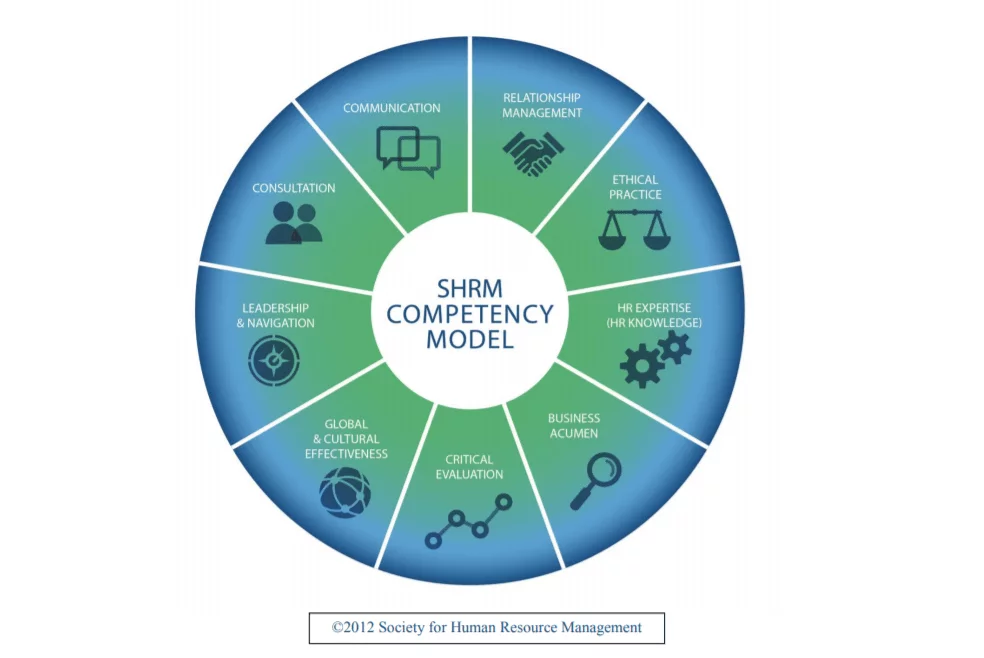SHRM Competency Model
Competency model development begins with aligning relevant business outcomes and HR skills and competencies with your competency model. To ensure that your competency model process is business-focused from start to finish, follow these steps and you’ll be able to rest easy knowing you’re hiring the best employees to help your company achieve success.
Step 1: Collect Data
It’s not enough to rely solely on interviews with potential employees as the cornerstone of your competency model development. This strategy is not only shortsighted but doesn’t provide the necessary information needed to identify the critical competencies of HR professionals for a particular job. By collecting data from potential employees, leaders, and internal or external customers through multiple formats, you’ll be able to obtain more information and enhance the relevance of your HR competency model and the key competencies of HR professionals.
Step 2: Integrate Data
While it’s essential to collect data from multiple perspectives, it’s not enough. Data must be analyzed separately then brought together to create a cohesive story around the critical knowledge, skills, abilities, and characteristics that will ensure the success of your competency model.
Step 3: Focus on Goals
When you focus on specific goals, you reinforce the alignment between your competency model development and the needs of your organization, creating a sense of urgency and cementing HR core competencies your employees should possess.
Step 4: Make it Practical
Your competency model is not useful unless everyone in the company can follow along. Avoid using technical jargon and fancy acronyms when describing the competencies of HR professionals needed for particular roles within your organization. By making your competency model interesting instead of a tedious HRM process, you bring it to a level where action can be taken easily.

Step 5: Establish a Strategy
Since your competency model can be used to determine whether you should hire new talent to join your organization or provide internal staff training to meet essential competencies of HR professionals, your competency model should be used to assess the time, effort, and budget available to create a strategy that will provide your organization with personnel that meet these requirements.
Step 6: Set Minimum Requirements
Your HR competency model needs to address the minimum acceptable levels of performance for each competency included in your model. Without leaders and managers across the organization understanding the minimum level at which individuals can perform and still be successful in their roles, they will not be able to hire employees that can contribute to the success of your organization.
Step 7: Business Outcomes
By linking your competency model to your desired business outcomes, you’ll be able to validate your HR competency model and show its direct business impact. This is an essential step in developing your competency model because it helps to drive your training, hiring, and performance strategies since you have a better understanding of which competencies to focus on based on their importance to your bottom line.
Step 8: Include Standards of Performance
It is essential that you make values and standards of performance a central part of your competency model because these standards represent a key piece of how the job should be performed.
Your SHRM competency model isn’t complete once you’ve created the perfect version of it. It is essential that you continue to refine your HR competency model and the strategy you use to create it. Try revising your competency model at least every year and a half to reflect the new roles of your organization and to ensure its comprehensiveness and relevance to your business objectives. Without an updated competency model on hand, the leaders of your organization will not be able to hire competent employees and your business will suffer.
These skills and competencies of HR professionals should be evident in the work life of every human resource professional.
References
SHRM Competency Model identifies what it takes to be a successful HR professionals across the performance continuum, around the globe, and across all career levels, job roles and job functions. Nice article.
ReplyDeleteThank you Anjalika, the SHRM Competency Model identifies specific behaviors that define proficiency at each stage of an HR professional's career. It serves as a resource to understand how you should be performing in your current career level as well as what you will need to know and do to succeed at the next level.
Deletethe concept of competency as a factor in recruitment, selection, hiring and employee performance evaluation has become very popular not only among HR practitioners but to the leaders echelons as well.
ReplyDeletethat's true sanjeewani, Competencies contribute to individual exemplary performance that creates reasonable impact on business outcomes.
DeleteHR professionals can use the model and its components in the planning and design of their HR departments. The model is built to easily align with existing organizational strategies and can be used to identify areas of strategic importance in the HR function. Good article!
ReplyDeleteThrough professional development and continuous improvement, any HR professional can contribute to his or her organization’s success in a meaningful way
DeleteThe SHRM Competency Model identifies what it takes to be a successful HR professional—across the performance continuum; around the globe; and across all career levels, job roles and job functions. ... Defines the competencies and knowledge necessary for effective practice as an HR professional.
ReplyDeleteYes Dhivya, this competency model is designed to serve as a resource for HR professionals interested in developing proficiency within each critical competency, from professionals just entering their HR career to those at the executive level.
DeleteNice topic, But what does SHRM actually stand for?
ReplyDeleteSHRM helped to communicate with employees about business engagements later advice management to regulate policies for their long term goals.
ReplyDeleteSHRM competency model provides the foundation for talent management throughout the HR life cycle.
ReplyDeleteNo more agreement as that it’s a true solid competencies framework to be existing in such current highly challenging business world.
ReplyDeleteVery useful Informative article
ReplyDelete